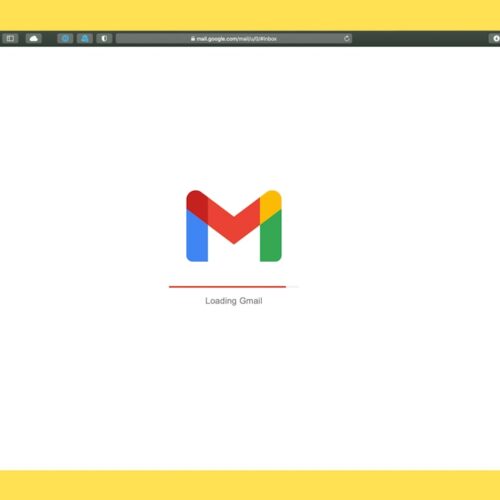Email marketing is a crucial component of any successful digital marketing strategy. It allows businesses to directly communicate with their target audience, build relationships, and drive conversions. With the rise of social media and other digital marketing channels, some may argue that email marketing is becoming less effective. However, research shows that email marketing continues to deliver a high return on investment (ROI) and remains a powerful tool for businesses.
In this blog post, we will focus on one specific aspect of email marketing: choosing the right days to send email campaigns. The timing of your email campaigns can have a significant impact on their success. By understanding your target audience and considering various factors, you can optimize your email schedule to maximize engagement and conversions.
Key Takeaways
- Choosing the right days to send email campaigns is crucial for the success of your email marketing efforts.
- Understanding your target audience is key to determining the best days to send emails.
- Factors to consider when choosing the best days to send emails include industry, time zone, and the type of email being sent.
- Mid-week days like Tuesday, Wednesday, and Thursday tend to have higher open and click-through rates.
- Testing and analyzing your email campaigns can help you optimize your email schedule and improve your overall email marketing strategy.
Importance of Choosing the Right Days to Send Campaigns
The timing of your email campaigns can greatly influence their effectiveness. Research has shown that certain days of the week yield higher open rates, click-through rates, and conversions. For example, studies have found that Tuesdays and Thursdays tend to have the highest open rates, while Saturdays and Sundays have the highest click-through rates.
Choosing the right days to send your email campaigns can help you reach more people, increase engagement, and ultimately drive more conversions. By strategically planning your email schedule, you can ensure that your messages are being delivered at the most opportune times when your audience is most likely to be receptive.
Understanding Your Target Audience
To choose the best days to send your email campaigns, it is crucial to have a deep understanding of your target audience. Every audience is unique, and what works for one may not work for another. By gathering information about your audience’s preferences and behaviors, you can tailor your email schedule to their specific needs.
There are several ways to gather information about your target audience. One effective method is conducting surveys or polls to gather insights directly from your subscribers. You can ask questions about their preferred days and times to receive emails, as well as their engagement habits. Additionally, you can analyze data from previous email campaigns to identify patterns and trends in engagement.
Factors to Consider When Choosing the Best Days to Send Emails
When choosing the best days to send your email campaigns, there are several factors to consider. These factors can vary depending on your industry, target audience, and specific goals. Here are some key factors to keep in mind:
1. Industry norms: Research industry norms and best practices to see if there are any specific days that tend to perform well for businesses similar to yours.
2. Audience behavior: Consider your audience’s habits and preferences. Are they more likely to check their emails during the week or on weekends? Do they have specific times of day when they are most active?
3. Competition: Take into account the email schedules of your competitors. Sending emails on the same days as your competitors may result in your messages getting lost in a crowded inbox.
4. Seasonality: Consider any seasonal trends or holidays that may impact your audience’s behavior. For example, during holiday seasons, people may be more likely to check their emails for promotions and deals.
By carefully considering these factors, you can make informed decisions about the best days to send your email campaigns.
Monday Blues: Is it a Good Day to Send Emails?
Mondays can be a challenging day for email marketing. Many people are catching up on work after the weekend and may have a crowded inbox. However, there are still some benefits to sending emails on Mondays.
One advantage of sending emails on Mondays is that it allows you to start the week off with a fresh message in your subscribers’ inboxes. If your audience is particularly active on Mondays or if you have time-sensitive information to share, sending emails on this day may be beneficial.
Industries that may benefit from sending emails on Mondays include retail, travel, and food and beverage. Retailers can take advantage of Monday emails to promote weekly deals or new arrivals. Travel companies can send emails on Mondays to inspire people to plan their next vacation. Food and beverage businesses can send emails on Mondays to promote lunch specials or happy hour deals.
Mid-Week Madness: The Best Days to Send Emails

Tuesdays, Wednesdays, and Thursdays are often considered the best days to send email campaigns. These mid-week days tend to have higher open rates and engagement compared to Mondays and Fridays.
One reason for this is that people are more likely to be in work mode during the middle of the week. They have settled into their routines and are more likely to check their emails regularly. Additionally, by mid-week, people have already dealt with the backlog of emails from the weekend and are more receptive to new messages.
Industries that may benefit from sending emails on these mid-week days include professional services, B2B companies, and educational institutions. Professional services such as law firms or consulting agencies can send emails on these days to share industry insights or offer consultations. B2B companies can use mid-week emails to nurture leads or share valuable content. Educational institutions can send emails on these days to promote courses or events.
Weekend Wonders: Should You Send Emails on Saturdays and Sundays?
Sending emails on weekends can be a double-edged sword. On one hand, people may have more free time to check their emails and engage with your content. On the other hand, weekends are also a time when people are more likely to be away from their computers or focused on personal activities.
The decision to send emails on weekends depends on your specific audience and goals. If you have data that shows your audience is active on weekends or if you have time-sensitive promotions, sending emails on Saturdays and Sundays may be worth considering.
Industries that may benefit from sending emails on weekends include e-commerce, entertainment, and hospitality. E-commerce businesses can take advantage of weekend emails to promote flash sales or limited-time offers. Entertainment companies can send emails on weekends to promote events or new releases. Hospitality businesses can use weekend emails to share exclusive deals or last-minute availability.
Time Zones and Global Audiences: How to Adjust Your Email Schedule
If you have a global audience, it is important to consider time zones when planning your email schedule. Sending emails at the wrong time can result in your messages being buried in an inbox or missed altogether.
To accommodate different time zones, you can segment your email list based on location and send emails at appropriate times for each segment. This may require some testing and analysis to determine the optimal times for each region.
Another option is to send emails at a time that works well for the majority of your audience, regardless of their time zone. For example, if you have a large portion of your audience in the United States, you may choose to send emails based on Eastern Standard Time (EST) since it is a widely recognized time zone.
Testing and Analyzing Your Email Campaigns
Testing and analyzing your email campaigns is crucial for optimizing your email schedule and maximizing engagement. By tracking key metrics such as open rates, click-through rates, and conversions, you can gain insights into what is working and what needs improvement.
A/B testing is a valuable technique for testing different variables in your email campaigns. You can test different days of the week, subject lines, call-to-action buttons, and other elements to see which combinations yield the best results.
In addition to A/B testing, it is important to regularly analyze your email campaign data. Look for patterns and trends in engagement to identify which days and times are most effective for your audience. Use this data to refine your email schedule and improve the performance of future campaigns.
Maximizing Your Email Marketing Efforts
Choosing the right days to send your email campaigns is a critical aspect of email marketing. By understanding your target audience, considering various factors, and testing and analyzing your campaigns, you can optimize your email schedule for maximum engagement and conversions.
Remember that every audience is unique, so what works for one may not work for another. It is important to gather data, test different strategies, and continuously refine your approach based on the insights you gain.
By applying the tips and strategies discussed in this blog post, you can maximize the effectiveness of your email marketing efforts and drive meaningful results for your business.


